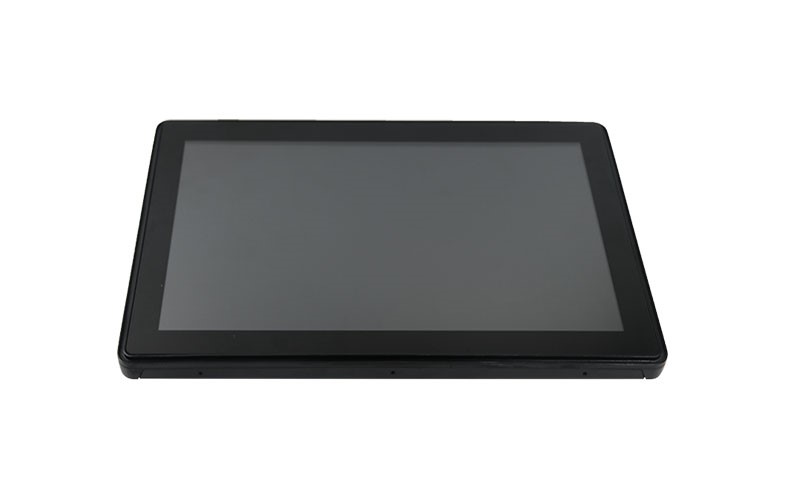How to Choose the Best Touchscreen Monitor for Industrial Use: An Engineers Perspective
Touchscreen monitors are increasingly popular in industrial settings due to their ease of use and ability to improve productivity. However, selecting the right touchscreen monitor for an industrial application can be a challenging task. In this article, we will provide technical details on key factors to consider when selecting a touchscreen monitor for an industrial application.

Environment
The environment where the touchscreen monitor will be used is the first factor to consider when selecting the right monitor.
Industrial environments can be harsh, with extreme temperatures, vibrations, dust, or outdoor use. To ensure that the monitor will last and function properly in such an environment, it is important to select a monitor that is specifically designed for your application’s environment. This can help improve performance, prevent damage, and ensure longevity.
The monitor should be able to read under sunlight, operate within the temperature range, withstand vibration and shock, and have a high level of protection, such as IP65 or higher.
Size, Resolution, and Brightness
In addition to the environment, the size, resolution, and brightness of a monitor are also important factors to consider.
The monitor’s size should be appropriate for the application and available space. A monitor that is too big or too small could be difficult to use or may not fit in the intended space.
The monitor’s resolution should be suitable for the application. For example, professional medical monitors have strict display demands, so it is better to choose a medical-specialized LCD. For industrial automation, 4:3 ratio LCDs are required. For some applications, a higher resolution, such as 1920×1080, may be necessary to improve display clarity and allow for more precise touch input.
A high brightness level is also necessary for industrial settings, especially in outdoor or bright environments. Additionally, a wide viewing angle is preferred to provide a better user experience. Finally, the LED lifetime of the touch monitor should also be taken into consideration for industrial applications.
Touch Technology
The choice of touch technology used in a monitor is an important consideration. There are four primary types of touch technology: resistive, capacitive, infrared, and saw touchscreen (outdated).
Resistive touchscreens are no longer the cheapest option. In some cases, they are even more expensive than capacitive touchscreens, due to their better anti-jamming performance. Resistive touchscreens are the best choice for industrial applications in harsh environments. They support USB and RS232 touch interfaces.
Capacitive touchscreens are more accurate, have a longer lifespan, and support up to 10-point multitouch functions. Capacitive touchscreens support I2C, USB, and RS232 interfaces. PCAP touchscreens can customize the cover glass for different shapes and can add icons, and logos on the glass to make the touch more modern and beautiful.
Infrared touchscreens are more sensitive and can be suitable for outdoor and larger applications in industrial settings.
It is best to select the appropriate touch technology based on the needs of the application and environment.
Connectivity
Connectivity is crucial for industrial touchscreen monitors. The monitor should be able to connect to necessary devices for your industrial application, including HDMI, VGA, DVI, and DP. It is important to ensure that the monitor has the necessary connectivity options before making a purchase decision.
Mounting Options
Mounting options are another factor to consider when selecting a touchscreen monitor for industrial use. The monitor should be able to be mounted in a variety of ways, including VESA mounting, panel mounting, and rack mounting. The mounting option should fit the available space and meet the application’s requirements.
Temperature range
Temperature range is an important consideration when selecting a touchscreen monitor for industrial use.
The monitor should be able to operate within the range of temperatures in the intended environment to ensure proper function and longevity. Industrial environments can be harsh, with extreme temperatures, and it is important to select a monitor that can withstand those conditions.
Some monitors are designed to operate in a wider temperature range, such as -20°C to 70°C, while others may be limited to a narrower range. It is important to select a monitor that can operate in the intended temperature range for the intended application.
Durability
Durability is crucial in industrial settings. The monitor should be able to withstand the harsh environment and operate reliably for an extended period. A monitor with a longer lifespan can help reduce the total cost of ownership.
Cost
Cost is another important aspect to consider. You should balance the cost against the features and functionality that you require. You should also consider long-term costs, such as maintenance and repair costs when making your decision.
Here are some additional aspects to consider when selecting a touchscreen monitor for industrial use:
- Customization options: Consider whether the manufacturer offers customization options for the monitor, such as structure design, changing the interface or mounting method, adding a protective cover, or changing the bezel color.
- Operating system compatibility: Ensure that the monitor is compatible with the operating system used in your industrial application.
- Power consumption: Consider the power consumption of the monitor to ensure that it is energy-efficient and cost-effective.
- Certification: Look for monitors that have undergone certification processes, such as CE, FCC, UL, and RoHS, to ensure safety and compliance with regulations.
- Warranty and support: Consider the warranty and support options offered by the manufacturer to ensure that you can get help if any issues arise.
In conclusion, selecting the right touchscreen monitor for an industrial application is an important decision that requires careful consideration of several technical factors. By taking these factors into account, you can select a touchscreen monitor that meets your specific needs and improves productivity in your industrial setting.
Keywords to choose the touchscreen monitor for industrial use: environment, size, resolution, touch technology, mounting options, Temperature, connectivity, cost, and durability.
The post How to Choose the Best Touchscreen Monitor for Industrial Use: An Engineer’s Perspective appeared first on EAGLE TOUCH.
from
https://eagle-touch.com/how-to-choose-the-best-touchscreen-monitor-for-industrial-use-an-engineers-perspective/
Article Source : eagletouch1.weebly.com/blog...